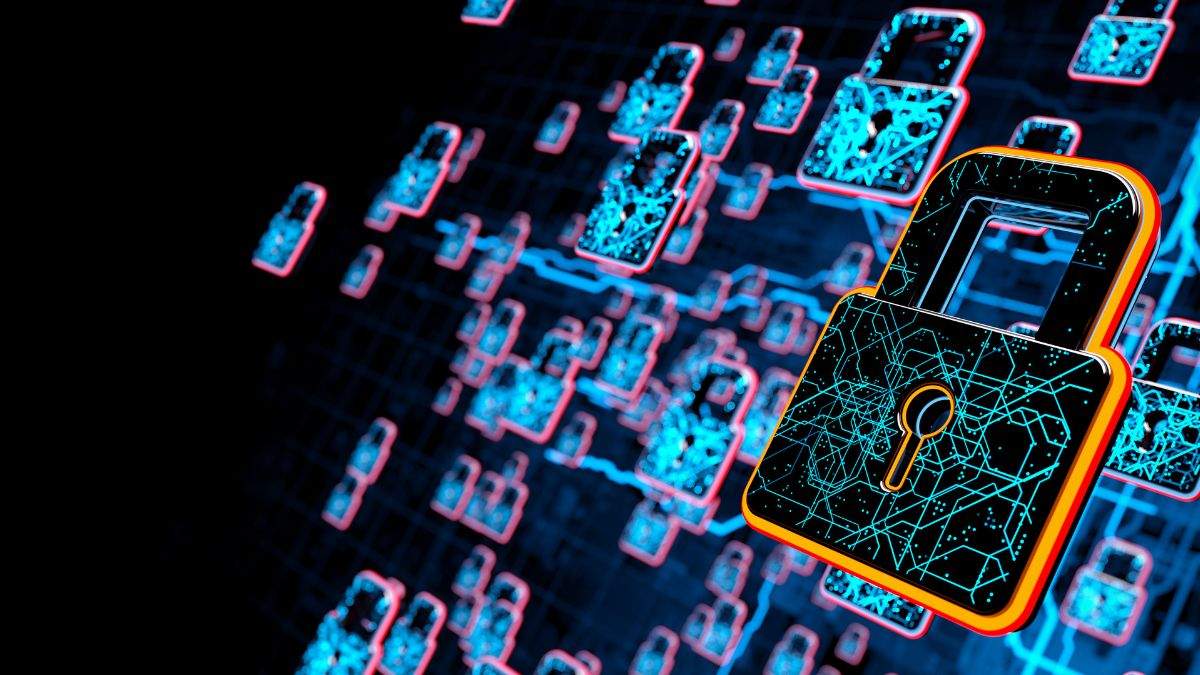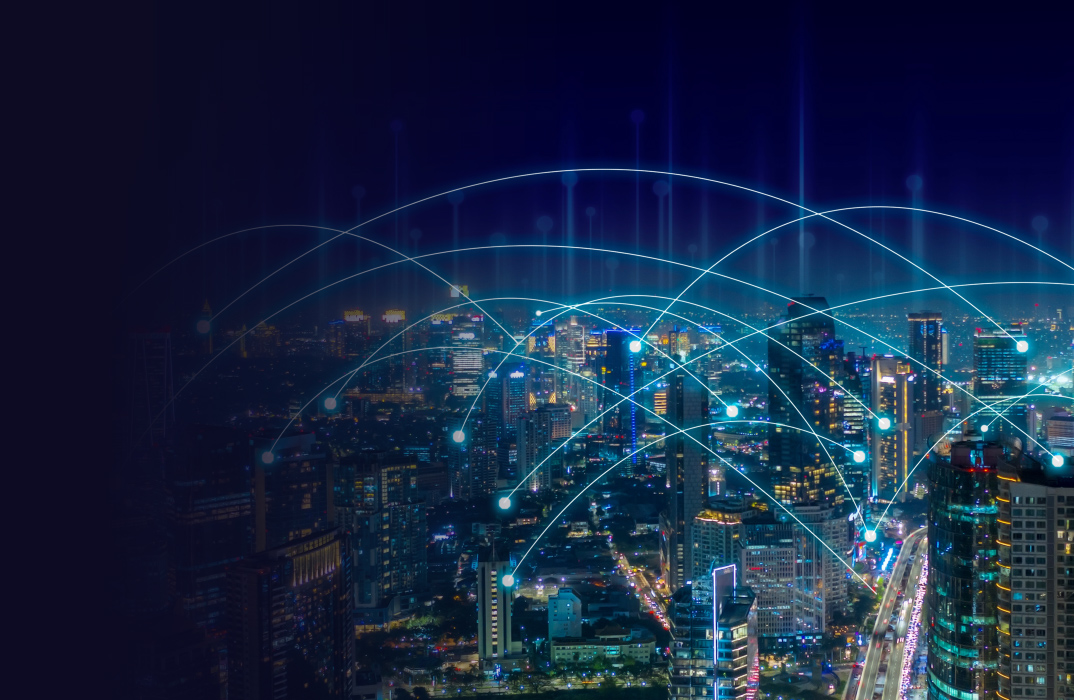Essential Cybersecurity Strategies for Modern Businesses
In an era where digital technology is the backbone of businesses worldwide, cybersecurity emerges as a crucial pillar for organizational resilience and success. The dynamic and unpredictable nature of cyber threats demands a comprehensive, multifaceted strategy to protect sensitive data, customer information, and ensure uninterrupted operations. This story explores various robust cybersecurity strategies crucial for safeguarding digital assets in the ever-shifting cyber landscape.
The journey begins with the establishment of a robust compliance framework, keeping pace with evolving regulatory requirements. Hiring a compliance officer to adhere to standards like ISO 27001 and GDPR forms the bedrock of this strategy. Employee education on cyber threats fosters a culture of vigilance, while contingency planning prepares for the inevitable cyber attacks. The narrative then shifts to effective communication and customer trust, emphasizing the importance of clear communication during breaches. The integration of AI and encryption in cybersecurity, alongside leadership’s role in fostering a security-aware culture, highlights the sophistication and depth of modern cybersecurity approaches.
The story culminates in a multi-faceted approach that blends preventive strategies with safety-net measures. Training employees, conducting regular security audits, and involving stakeholders like the Board of Directors are key elements. Strong password management and multi-factor authentication form the final line of defense. The conclusion echoes a call for continuous vigilance and adaptation in the face of evolving cyber threats, emphasizing the critical role of ongoing commitment to cybersecurity for thriving in the digital age.
Hire An In-House Compliance Officer
The primary responsibility of an In-House Compliance Officer is to stay abreast of changing regulations in the cybersecurity domain. This includes being well-versed with international standards like ISO (International Organization for Standardization), SOC2 (Service Organization Control 2), and GDPR (General Data Protection Regulation). These standards are critical for businesses operating globally, as they dictate the framework for managing and securing data. The ISO focuses on establishing guidelines for information security management systems, SOC2 on the management of customer data, and GDPR on data protection and privacy for individuals within the European Union.
Having an In-House Compliance Officer ensures that the organization is not only complying with these standards but is also ahead of regulatory changes. This proactive approach is vital in a landscape where cyber threats are constantly evolving. The officer can guide the organization in implementing the necessary technical and administrative measures to meet these standards, thereby safeguarding sensitive data and systems from potential breaches.
Additionally, the role involves educating and training the workforce about compliance requirements and the importance of adhering to them. This creates a culture of security awareness within the organization, making each employee a part of the cybersecurity framework.
Moreover, an In-House Compliance Officer plays a critical role in risk assessment. By regularly evaluating the company’s cybersecurity measures against the current regulations, they can identify areas of vulnerability and recommend improvements. This continuous process of assessment and enhancement of security protocols is essential in maintaining a robust defense against cyber threats.
Raise Awareness About Cybersecurity Threats
Regular communication of cyber threats is key to keeping the workforce informed and vigilant. Cybersecurity is not just a concern for IT departments; it’s a business-wide issue. Regular updates on the latest types of cyber attacks, such as phishing, ransomware, or social engineering tactics, help employees recognize and report suspicious activities. This can be achieved through periodic newsletters, training sessions, or briefings. Such educational initiatives empower employees with the knowledge to act as the first line of defense against cyber intrusions.
Moreover, the development of business continuity plans is an essential component of this strategy. A well-designed business continuity plan ensures that a company can maintain or quickly resume critical functions following a cyber incident. This involves identifying critical assets, assessing potential cyber risks, and developing response and recovery procedures. Regular drills or simulations of cyber attacks can also be conducted to test the effectiveness of these plans, providing an opportunity for continuous improvement.
A comprehensive business continuity plan should not only focus on how to react during a cyber attack but also on how to continue operations in its aftermath. This might include having redundant systems in place, strategies for remote access, and methods for communicating with customers and stakeholders during a crisis.
Take Fraud Defense Measures
The management of digital fraud risks begins with understanding the types of fraud prevalent in the online space. This includes identity theft, credit card fraud, phishing attacks, and more. Businesses must implement robust security protocols such as secure socket layer (SSL) encryption for websites, firewalls, and antivirus software to protect against unauthorized access to sensitive information. Additionally, regularly updating these security measures is crucial to counteract the constantly evolving tactics of cybercriminals.
Utilizing advanced analytics and machine learning algorithms can significantly enhance a company’s ability to detect and prevent fraud. These technologies can analyze large volumes of transaction data to identify patterns that indicate fraudulent activity. By flagging unusual transactions for further review, businesses can prevent unauthorized access or fraudulent transactions before they impact the bottom line.
Moreover, employee training plays a critical role in fraud defense. Employees should be educated about the common tactics used by fraudsters and trained to recognize the signs of a security breach. This training should include guidelines on handling sensitive customer information and protocols to follow in the event of a suspected fraud.
Educating customers about safe online practices is also an important part of fraud defense. Companies can provide resources and tips to help customers protect their personal information and recognize scams. This not only helps in preventing fraud but also strengthens the trust between the business and its customers.
Create And Maintain Contingency Plans
The creation and maintenance of contingency plans are fundamental components of a comprehensive cybersecurity strategy, particularly in an era where cyber-attacks are not a question of “if” but “when.” These plans are critical for businesses to ensure continuity and resilience in the face of inevitable cyber threats. The development of these plans involves a meticulous approach to identifying potential cyber risks and outlining effective response strategies.
A well-devised contingency plan starts with the identification of key business assets and functions that are critical to the company’s operations. This step is crucial in understanding what needs protection and the potential impact of a cyber-attack. Following this, businesses must conduct thorough risk assessments to pinpoint vulnerabilities within their systems and processes. These assessments should be a regular occurrence, adapting to new threats and evolving technologies.
The core of a contingency plan lies in its detailed response strategies. These strategies should include immediate actions to contain and mitigate the damage of a cyber-attack, such as isolating affected networks, shutting down compromised systems, and activating backup processes. Rapid response is vital to minimize the impact and duration of a security breach.
Additionally, contingency plans should encompass recovery processes to restore normal operations post-attack. This includes the restoration of data from backups, repairing affected systems, and implementing measures to prevent future incidents. Regular testing and updating of these plans are essential to ensure their effectiveness in real-world scenarios.
Another often-overlooked aspect of contingency planning is the importance of maintaining hard copies of critical documents and offline backups. In an age where digital data can be compromised or locked by ransomware, having physical backups can be a lifeline for businesses, allowing them to access crucial information during and after a cyber incident.
Balance Data Use And Security
Balancing data use and security is an increasingly critical strategy in the digital age, where data is a valuable asset for businesses but also a potential liability if not handled correctly. The principles of data management – minimalism, disposal of unnecessary data, and employing technological tools for risk identification – are key to achieving this balance.
Data minimalism revolves around the concept of collecting only the data that is absolutely necessary for business operations. This principle is not only a best practice for data security but also aligns with regulations like the General Data Protection Regulation (GDPR), which advocates for data minimization. By limiting the amount of data collected and stored, businesses reduce their vulnerability to data breaches and simplify their data management responsibilities.
The disposal of unnecessary data is equally important in balancing data use and security. Holding onto old, unused data not only clutters systems but also presents an unnecessary risk. Regularly auditing data and securely disposing of information that is no longer needed can significantly reduce the risk of data leaks and breaches. Secure disposal means ensuring that the data cannot be recovered or reconstructed, thereby protecting the business from potential data exposure.
Technological tools play a vital role in identifying risks associated with data storage and usage. Advanced analytics, artificial intelligence, and machine learning can help businesses monitor and analyze data flows, detect unusual patterns indicating potential breaches, and provide insights into areas where data security can be improved. These tools also assist in compliance management, ensuring that data is handled in line with legal and regulatory requirements.
Have A Communication Plan
Having a comprehensive communication plan in place is vital for businesses in managing the aftermath of a cybersecurity breach. This plan is essential not just for internal coordination, but also for maintaining customer trust and confidence during such crises. In today’s interconnected world, where news travels fast, the ability to communicate effectively and transparently can significantly mitigate the damage to a company’s reputation following a breach.
The foundation of a strong communication plan lies in its preparedness and clarity. It should clearly define the roles and responsibilities of team members in the event of a breach, ensuring that everyone knows their part in the communication process. This involves designating spokespersons who are trained to handle media inquiries and public statements, and team members responsible for communicating with different stakeholders, including customers, employees, and regulatory bodies.
Timeliness is another critical element of the plan. In the event of a breach, businesses must act swiftly to communicate with stakeholders. Delay in communication can lead to speculation and misinformation, exacerbating the situation. The plan should outline a timeline for initial communications following the discovery of a breach, keeping stakeholders informed as the situation unfolds and more information becomes available.
Transparency is crucial in these communications. Businesses should provide clear and honest information about the nature and extent of the breach, what is being done to address it, and what steps are being taken to prevent future incidents. This transparency helps in maintaining trust with customers and partners.
Manage The Problem Collaboratively
The collaborative management of cybersecurity problems is a strategic approach that recognizes the complexity and interconnectedness of modern digital ecosystems. This strategy emphasizes the importance of working together, both within the organization and with external partners, to fortify defenses against cyber threats. Effective collaboration involves a combination of shared risk management and establishing key controls for cybersecurity.
In the context of collaborative risk management, it is essential for different departments within an organization to work in unison. Cybersecurity is no longer a concern that can be siloed within the IT department. It requires a coordinated effort across all levels, including management, finance, human resources, and operations. Each department can contribute unique insights into potential vulnerabilities and help develop a comprehensive risk management strategy. For instance, the HR department can play a crucial role in employee training and awareness programs, while the finance department can assist in allocating resources for cybersecurity measures.
Collaborating with external partners, such as vendors, suppliers, and cybersecurity firms, is also critical. These partnerships can provide access to specialized knowledge, tools, and best practices that enhance an organization’s ability to detect and respond to cyber threats. Sharing information about threats and vulnerabilities with industry peers and participating in joint cybersecurity initiatives can also be beneficial. This collective approach helps create a more robust cybersecurity ecosystem where businesses can leverage shared experiences and expertise.
Key controls for cybersecurity are another vital aspect of collaborative management. These controls include implementing strong access management, regular security audits, data encryption, and incident response plans. Establishing these controls requires input and cooperation from various stakeholders to ensure they are effectively integrated into all aspects of the business operations.
Tighten Security With Encryption
Enhancing cybersecurity with encryption is a critical strategy for businesses in the digital age, where safeguarding sensitive information is paramount. Encryption is a powerful tool that transforms data into a coded format, making it unintelligible to unauthorized users. This strategy is crucial for protecting transaction data, and when combined with multi-factor authentication (MFA) and employee training, it forms a robust defense against cyber threats.
Encrypting transaction data ensures that sensitive information, such as customer details, financial records, and confidential business data, is secure both in transit and at rest. This is especially important for online transactions where data vulnerability is high. Encryption algorithms encode this data, making it accessible only to individuals with the decryption key. In the event of a data breach, encrypted data remains protected, thus significantly reducing the risk of information theft or misuse.
Multi-factor authentication adds an additional layer of security to encryption. MFA requires users to provide two or more verification factors to access a system or account, which can include something they know (like a password), something they have (like a smartphone), or something they are (like a fingerprint). This method significantly reduces the risk of unauthorized access, as it is unlikely for an attacker to compromise multiple authentication factors. Implementing MFA across all systems, particularly those involving sensitive transactions, is a critical step in safeguarding data.
Employee training is equally important in the effective implementation of encryption and MFA. Employees must understand the importance of these security measures and how to use them correctly. Regular training sessions can educate employees about the principles of encryption, the importance of secure passwords, and the procedures for using MFA. This training ensures that employees are not the weak link in the security chain, but rather informed participants in the company’s cybersecurity efforts.
Ensure Leadership Emphasizes Cybersecurity’s Importance
The emphasis on cybersecurity’s importance by leadership is a pivotal strategy in fostering a robust cybersecurity culture within an organization. When company leaders prioritize and actively engage in cybersecurity initiatives, it sends a powerful message throughout the organization, underscoring the significance of these measures in the overall health and safety of the business.
Leadership’s role in promoting a cybersecurity culture extends beyond mere endorsement. It involves setting the tone at the top, demonstrating a commitment to cybersecurity through actions and policies. This could include allocating adequate resources for cybersecurity measures, participating in cybersecurity training alongside employees, and incorporating cybersecurity discussions in regular management meetings. When leaders are visibly involved in these activities, it underscores the importance of cybersecurity to every employee, encouraging a company-wide culture of security awareness and responsibility.
Moreover, leaders should champion the development and implementation of comprehensive cybersecurity policies. These policies should outline the organization’s approach to managing and protecting its digital assets, including guidelines for data handling, response protocols for security incidents, and regular assessments of the cybersecurity infrastructure. By actively participating in the development and enforcement of these policies, leaders ensure that cybersecurity is not an afterthought but a fundamental aspect of the organization’s strategy and operations.
Additionally, leadership can play a crucial role in communicating the importance of cybersecurity to external stakeholders, including customers, partners, and shareholders. This communication can help build trust and convey the company’s dedication to safeguarding sensitive information and systems.
Have Strategies And Preventative Measures In Place
Incorporating both strategies and preventative measures is a critical aspect of a comprehensive cybersecurity approach for businesses. This dual focus combines proactive measures to avert potential cyberattacks with reactive strategies to effectively respond in the event of a breach. A well-rounded cybersecurity plan integrates these elements to ensure both immediate and long-term protection against evolving digital threats.
Preventative measures form the first line of defense against cyber threats. These include deploying advanced security technologies such as firewalls, antivirus software, intrusion detection systems, and regular security patches to safeguard against known vulnerabilities. Additionally, implementing stringent access controls and network segmentation can prevent unauthorized access and limit the spread of potential breaches within the network.
Employee training and awareness programs are also vital preventative measures. Educating staff about common cyber threats, such as phishing and social engineering tactics, and promoting safe online practices helps prevent security incidents from occurring. Employees should be trained to recognize suspicious activities and understand the procedures for reporting them.
On the other side of the strategy, having robust response plans in place is crucial for mitigating the impact of a cyberattack. This includes having an incident response team equipped with a clear set of protocols to quickly and efficiently address security breaches. These protocols should detail steps for containing the breach, assessing the damage, communicating with stakeholders, and restoring normal operations.
Regular security audits and evaluations are also part of this mix, providing insights into the effectiveness of current cybersecurity measures and identifying areas for improvement. These audits can reveal hidden vulnerabilities and help businesses stay ahead of potential threats.
Ensure Employees Are Trained And Aware
Ensuring that employees are trained and aware of cybersecurity threats is a critical strategy for businesses in safeguarding against cyberattacks. Employee training is not just an additional measure; it’s a fundamental aspect of a robust cybersecurity defense. In many cases, the human element is the weakest link in the security chain, making it crucial for businesses to invest in comprehensive and ongoing cybersecurity education for their workforce.
Effective employee training should cover a wide range of topics related to cybersecurity. This includes understanding the various types of cyber threats such as phishing, malware, ransomware, and social engineering attacks. Employees need to be familiar with the tactics used by cybercriminals and how to recognize suspicious activities. For instance, identifying phishing emails, understanding the risks of clicking on unknown links, and recognizing the signs of a compromised system are essential skills.
Moreover, cybersecurity training should extend beyond mere awareness of threats; it must also encompass best practices for safeguarding data. This includes secure password practices, the safe handling of sensitive information, understanding privacy policies, and adhering to the organization’s IT security protocols. Employees should be trained on the use of security tools provided by the organization, such as VPNs, encrypted communication tools, and secure file-sharing platforms.
Regular updates and refresher courses are also crucial. Cyber threats are constantly evolving; thus, the training content should be updated regularly to reflect the latest threats and security practices. Regular training sessions ensure that employees remain vigilant and up-to-date with the necessary knowledge to protect themselves and the organization.
Employee training should also be tailored to different roles within the organization. Different departments may face unique risks based on their data access and usage, so training should be relevant to their specific context.
Take A Multi-Faceted Approach
Adopting a multi-faceted approach to cybersecurity is essential in today’s increasingly complex and interconnected digital landscape. Cyber threats are diverse and evolving, making it crucial for businesses to implement a variety of strategies and tools to ensure comprehensive protection. A multi-faceted approach involves integrating multiple layers of defense to safeguard against different types of cyberattacks.
One aspect of this approach is technological defenses. This includes deploying advanced cybersecurity technologies like firewalls, intrusion detection and prevention systems, antivirus and anti-malware software, and secure network architectures. These technologies should be continually updated and monitored to defend against the latest threats. Additionally, employing encryption for sensitive data, both at rest and in transit, adds another layer of security.
However, technology alone is not enough. Organizational policies and procedures play a critical role. This involves establishing clear cybersecurity policies, access control protocols, and incident response plans. Regular security audits and assessments are also essential to identify vulnerabilities and ensure compliance with these policies.
Human factors are equally crucial in a multi-faceted cybersecurity approach. Regular training and awareness programs for employees are necessary to equip them with the knowledge to identify and respond to cyber threats. This includes training on safe online practices, recognizing phishing attempts, and securely managing passwords.
Moreover, a multi-faceted approach extends beyond the organization’s boundaries. Collaboration with external stakeholders, such as cybersecurity firms, industry peers, and regulatory bodies, is important. Sharing knowledge and best practices can provide valuable insights and enhance overall cybersecurity posture.
Create A Cyber-Resilient Business Culture
Building a cyber-resilient business culture is an essential strategy for modern organizations to withstand and rapidly recover from cyber incidents. Cyber resilience goes beyond mere prevention; it involves creating an environment where the organization is prepared to face, respond to, and recover from cyber threats effectively. This cultural shift requires a comprehensive approach, encompassing both technological and human elements.
Creating a cyber-resilient culture starts with leadership commitment. When top executives prioritize cybersecurity, it sets a tone for the entire organization. Leaders should actively promote cyber resilience through their policies, investments, and behaviors. This includes allocating sufficient resources for cybersecurity measures, endorsing continuous learning and improvement in cyber practices, and leading by example.
Employee engagement is another critical factor in building a cyber-resilient culture. Every member of the organization, regardless of their role, should be aware of the importance of cybersecurity. Regular training and awareness programs are necessary to keep staff informed about the latest cyber threats and best practices for preventing them. These programs should not be one-time events but an ongoing process, integrating cybersecurity into the daily workflow and mindset of employees.
Furthermore, a cyber-resilient culture is underpinned by robust processes and technology. This includes implementing effective security controls, regular risk assessments, and having a well-defined incident response plan. Technology solutions like real-time monitoring, data encryption, and secure access controls are crucial components. However, these need to be complemented by clear procedures and protocols that guide employees on how to use these tools effectively and respond in case of a security breach.
Implement Cybersecurity Education Programs
Implementing cybersecurity education programs is a crucial strategy for businesses in reinforcing their defenses against cyber threats. In an era where the sophistication and frequency of cyberattacks are escalating, equipping employees with the knowledge and skills to recognize and respond to these threats is essential. These education programs should be comprehensive, ongoing, and tailored to fit the needs and roles of different employees within the organization.
The foundation of effective cybersecurity education programs lies in their comprehensiveness. They should cover a broad range of topics, from basic digital hygiene practices like secure password management and recognizing phishing emails, to more advanced subjects such as data privacy laws, secure handling of sensitive information, and the implications of cybersecurity breaches. This ensures that employees are well-rounded in their understanding of cybersecurity.
Ongoing education is also key. Cyber threats are constantly evolving, and so should the content of these programs. Regular updates and training sessions are necessary to keep employees abreast of the latest threats, tactics used by cybercriminals, and advancements in cybersecurity technologies. These sessions can be conducted in various formats, including workshops, webinars, e-learning modules, and interactive simulations.
Tailoring the content to different groups within the organization enhances the effectiveness of the education programs. Different departments may face unique risks based on their data access and usage. For example, the IT department might require in-depth technical training on network security, while the marketing team might benefit more from training on social media security and customer data protection.
Cybersecurity education programs should also encourage a culture of security. This means fostering an environment where cybersecurity is everyone’s responsibility. Encouraging open communication about cybersecurity issues, rewarding secure behaviors, and creating channels for reporting potential threats can cultivate a proactive security mindset among employees.
Employ Password Protection
The creation of strong passwords is crucial. Businesses should enforce policies that require passwords to be complex and difficult to guess. This means avoiding common words and phrases, and incorporating a mix of uppercase and lowercase letters, numbers, and special characters. Employees should be discouraged from using easily guessable information like birthdates or simple sequences. Educating employees on the importance of strong passwords and providing guidelines on how to create them is essential.
Regularly updating passwords adds another layer of security. Businesses should implement policies that require passwords to be changed at regular intervals, such as every 90 days. This practice helps in mitigating the risks associated with password theft or exposure. During password updates, it’s important that employees do not recycle previously used passwords or use the same password across multiple accounts.
Advanced password management tools can significantly enhance password security. These tools can store and encrypt passwords, generate strong passwords, and even automate the process of changing passwords. They also often include features like two-factor authentication, which adds an additional layer of security beyond the password itself. Encouraging or mandating the use of these tools can help businesses ensure that their password policies are consistently applied and adhered to.
Secure Data Access Using Multi-Factor Authentication
Securing data access using Multi-Factor Authentication (MFA) is a critical cybersecurity strategy for businesses, especially in an era where cyber threats are becoming more sophisticated. MFA is an authentication method that requires users to provide two or more verification factors to gain access to a resource, such as an online account, application, or a VPN. This strategy significantly enhances security by adding layers of defense, making it more challenging for unauthorized users to breach corporate systems and access sensitive financial information.
MFA is particularly effective because it combines different elements that an unauthorized user is unlikely to obtain simultaneously. These elements typically include something the user knows (like a password), something the user has (like a smartphone or a security token), and something the user is (like a fingerprint or facial recognition). Even if one factor (like a password) is compromised, the additional factors provide a safeguard, making unauthorized access much more difficult.
Implementing MFA across all systems that access sensitive financial information is vital. This includes email systems, financial management software, customer databases, and any other systems that contain or can access confidential data. It’s especially important for remote access solutions, as remote work becomes more prevalent, increasing the risk of security breaches.
For MFA to be effective, businesses must ensure that it is user-friendly and does not impede productivity. Employees should receive training on how to use MFA tools and understand the importance of these measures in protecting the company’s data. Furthermore, the choice of authentication factors should consider the ease of use and the security needs of the organization. For instance, biometric authentication can offer a higher level of security while also being convenient for users.
Have Periodic Security Audits And Evaluations
Conducting periodic security audits and evaluations is an essential cybersecurity strategy for businesses. In a landscape where cyber threats are constantly evolving, regular audits provide crucial insights into the effectiveness of current security measures and help identify potential vulnerabilities. These evaluations are key to ensuring that cybersecurity practices remain robust and can adapt to new challenges.
Security audits should be thorough and comprehensive, encompassing all aspects of the organization’s cybersecurity infrastructure. This includes reviewing network and system access controls, examining the security of physical and cloud-based servers, assessing the effectiveness of firewalls and antivirus systems, and evaluating employee adherence to security policies. Audits should also review the organization’s incident response and recovery plans to ensure they are up-to-date and effective.
An important aspect of these audits is the assessment of compliance with relevant cybersecurity standards and regulations. This is particularly crucial for businesses in regulated industries or those that handle sensitive customer data. Regular compliance checks ensure that the organization is not only protected against cyber threats but also aligned with legal and regulatory requirements, thereby avoiding potential fines and legal issues.
Security evaluations should also include penetration testing, where cybersecurity professionals simulate cyberattacks to test the organization’s defenses. These tests can reveal hidden vulnerabilities that might not be apparent in a standard audit and provide valuable insights into how real-world attacks could potentially impact the organization.
Periodic audits and evaluations should be conducted by a combination of internal teams and external cybersecurity experts. Internal teams offer an intimate understanding of the organization’s systems and processes, while external experts provide an unbiased perspective and specialized expertise. This combination ensures a comprehensive and thorough evaluation.
At Zeren, our dedication to cybersecurity transcends just providing individual services. We adopt a holistic strategy, customizing our solutions to align with the specific needs and risks of your organization. This approach guarantees thorough protection for your valuable assets.
Don’t allow cyber threats to jeopardize your business. Choose Zeren as your partner and secure steadfast cybersecurity for your company today!








